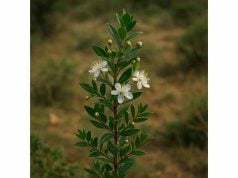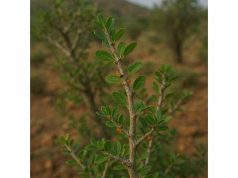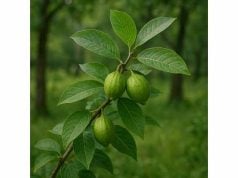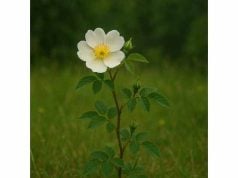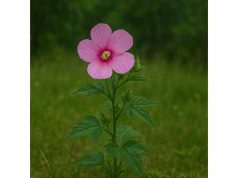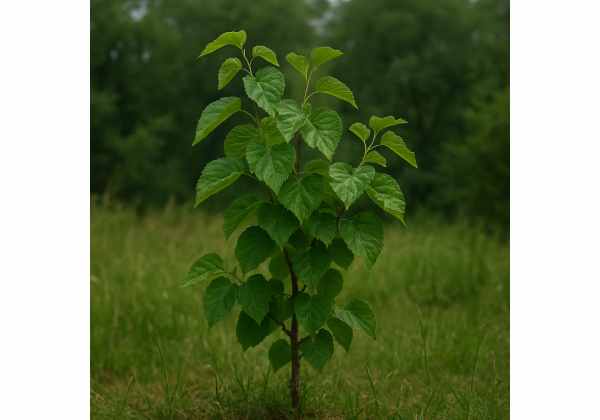
Mulberry is a time-honored fruit-bearing tree celebrated not only for its sweet, succulent berries but also for its impressive health benefits. This guide explores mulberry’s potent bioactive compounds, including anthocyanins, flavonoids, and polyphenols, which contribute to its antioxidant, anti-inflammatory, and blood sugar-regulating properties. Revered in traditional medicine for its digestive, cardiovascular, and neuroprotective effects, mulberry is also utilized in culinary dishes and natural skincare. As you read on, discover a comprehensive breakdown of its botanical features, chemical profile, therapeutic advantages, practical applications, and scientific studies that validate its myriad uses.
Table of Contents
- Plant Profile and Identification
- Phytochemical Spectrum and Active Constituents
- Health Advantages and Core Attributes
- Practical Applications and Safety Guidelines
- Research Insights and Notable Study Outcomes
- Frequently Asked Questions
Plant Profile and Identification
Mulberry trees belong to the genus Morus and are widely distributed across Asia, Africa, Europe, and North America. These deciduous trees are appreciated for their adaptability, robust growth, and ornamental beauty. Typically reaching heights of 10–20 meters, mulberry trees are characterized by their heart-shaped or lobed leaves that often exhibit a glossy texture. The tree produces clusters of small, inconspicuous flowers that give way to luscious, sweet berries varying in color from white and red to deep purple and black, depending on the species.
Botanical Characteristics
Mulberry trees have a distinctive appearance that makes them easily recognizable in both wild and cultivated landscapes. Their leaves are simple in structure, with serrated margins and an asymmetrical base, giving them a unique, irregular charm. In spring, the leaves unfurl in a fresh burst of green, while the summer months bring an abundance of fruit that not only serves as food for local wildlife but also offers nutritional benefits for humans. The bark of mulberry trees is typically rough and furrowed, adding to their rustic appeal.
Taxonomy and Varieties
The genus Morus comprises several species, with Morus alba (white mulberry), Morus nigra (black mulberry), and Morus rubra (red mulberry) being the most commonly known. Each species exhibits slight variations in fruit taste, leaf size, and growth habits. For instance, Morus alba is often celebrated for its rapid growth and adaptability, while Morus nigra is prized for its intensely flavored, dark fruits. These species have been cultivated for centuries, not only for their fruit but also for their leaves, which serve as the primary food source for silkworms in sericulture.
Growth Conditions and Habitat
Mulberry trees thrive in a range of soil types, though they prefer well-drained, fertile soils with a neutral to slightly alkaline pH. They are highly resilient, tolerating periods of drought and moderate frost, which makes them popular in both urban and rural settings. Naturally, mulberry trees are found in river valleys, forest margins, and areas with abundant sunlight. Their deep root systems not only secure them against strong winds but also enable them to access moisture during dry spells.
Historical and Cultural Significance
Historically, mulberry has played a significant role in human culture. In ancient China, mulberry leaves were instrumental in the silk production process, while in other parts of the world, the fruit was consumed fresh, dried, or made into jams and wines. Folklore and traditional medicine from various cultures attribute mulberry with qualities ranging from vitality enhancement to digestive regulation. Its enduring presence in art, literature, and traditional remedies underscores the deep-rooted connection between mulberry trees and human civilization.
Modern Cultivation Practices
Today, mulberry trees are cultivated both in home gardens and on a commercial scale. Advances in horticultural practices have improved fruit yield and quality, with selective breeding enhancing characteristics such as sweetness, size, and disease resistance. Organic farming practices are also increasingly applied to mulberry cultivation, ensuring that the berries and leaves retain their natural potency without the interference of chemical fertilizers or pesticides. As consumer demand for natural and nutritious foods grows, mulberry continues to gain popularity as a superfruit with both culinary and medicinal applications.
Ecological Contributions
Mulberry trees offer significant ecological benefits. Their extensive canopy provides habitat and food for numerous bird species, while their deep roots help stabilize soil and prevent erosion. In urban environments, mulberry trees contribute to air purification and create green spaces that improve the quality of life. The tree’s ability to adapt to various climates and conditions makes it an invaluable component of both natural ecosystems and managed landscapes, illustrating its broad utility and enduring charm.
Phytochemical Spectrum and Active Constituents
Mulberry is not only admired for its aesthetic and nutritional value but also for its rich array of bioactive compounds that contribute to its health-promoting properties. Modern research has identified several key phytochemicals in mulberry, each playing a unique role in the herb’s therapeutic potential.
- Anthocyanins
These potent antioxidants are responsible for the deep purple and red hues seen in many mulberry varieties. Anthocyanins help neutralize free radicals, thereby reducing oxidative stress and lowering the risk of chronic diseases. They also contribute to improved vascular health and may play a role in protecting against neurodegenerative conditions. - Flavonoids
Mulberry contains a diverse range of flavonoids, such as quercetin, rutin, and catechins, which exhibit strong anti-inflammatory and antioxidant activities. These compounds are essential in supporting immune function, enhancing cardiovascular health, and promoting overall cellular protection. Flavonoids also help improve circulation and may reduce the risk of certain cancers. - Polyphenols
The high concentration of polyphenols in mulberry contributes significantly to its ability to combat oxidative stress. These compounds work synergistically with anthocyanins and flavonoids to reduce inflammation, support heart health, and protect the body from environmental toxins. Their presence is associated with a lower incidence of metabolic disorders. - Resveratrol
Known for its anti-aging properties, resveratrol is a natural compound found in mulberry that contributes to improved cardiovascular function and longevity. This stilbene derivative is believed to activate certain cellular pathways that enhance cellular repair and reduce inflammation, thereby promoting long-term health. - Vitamin C and Other Antioxidants
Mulberry berries are a rich source of vitamin C, an essential nutrient known for its immune-boosting and skin-rejuvenating properties. Together with other antioxidants, vitamin C helps protect the body from free radicals, supports collagen production, and enhances overall vitality. - Dietary Fiber
Although not a phytochemical in the strict sense, the high fiber content in mulberry plays a crucial role in digestive health. Dietary fiber aids in regulating blood sugar levels, lowering cholesterol, and maintaining a healthy gut microbiome. It also contributes to a feeling of fullness, which can be beneficial for weight management. - Essential Minerals
Mulberry is abundant in essential minerals such as potassium, calcium, and magnesium. These minerals are vital for maintaining proper nerve function, muscle contractions, and bone health. They work in concert with the bioactive compounds to support overall physiological balance and well-being. - Organic Acids
The presence of organic acids, including citric and malic acid, enhances the bioavailability of the other nutrients present in mulberry. These acids contribute to the fruit’s tangy flavor and may play a role in detoxification processes within the body.
The dynamic interplay of these compounds endows mulberry with a robust nutritional profile and potent medicinal properties. Researchers continue to investigate how these bioactive constituents work together to promote health, with studies suggesting that the whole fruit’s benefits far exceed those of isolated components. This synergy supports the traditional use of mulberry in herbal medicine and offers promising avenues for the development of natural health supplements.
Health Advantages and Core Attributes
Mulberry is celebrated for its comprehensive range of health benefits, which are attributed to its rich phytochemical profile and nutritional density. Traditional medicine systems have long employed mulberry to promote vitality, support metabolic balance, and enhance overall health. Modern science confirms many of these benefits through clinical and laboratory studies.
Key Health Benefits
- Antioxidant Protection:
The high levels of anthocyanins, flavonoids, and polyphenols in mulberry provide powerful antioxidant protection, neutralizing harmful free radicals and reducing oxidative stress. This protective effect is linked to a reduced risk of chronic diseases, including cardiovascular disease and cancer. - Blood Sugar Regulation:
Mulberry has been shown to help regulate blood sugar levels by inhibiting carbohydrate-digesting enzymes, which slows the absorption of sugars into the bloodstream. This makes it a promising natural aid for individuals with diabetes or those at risk of developing metabolic syndrome. - Cardiovascular Support:
The flavonoids and resveratrol found in mulberry contribute to improved blood circulation and reduced inflammation, supporting overall heart health. These compounds help lower cholesterol levels, reduce blood pressure, and enhance vascular function, thereby mitigating the risk of heart disease. - Digestive Health:
With its significant fiber content, mulberry supports a healthy digestive system by promoting regular bowel movements and nurturing beneficial gut bacteria. A balanced gut microbiome is crucial for immune function, nutrient absorption, and overall digestive wellness. - Immune System Boost:
Rich in vitamin C and other antioxidants, mulberry fortifies the immune system, making it easier for the body to fend off infections and recover from illness. Its anti-inflammatory properties also help reduce the burden on the immune system during times of stress. - Anti-Aging and Skin Health:
The antioxidants in mulberry not only protect internal organs but also support skin health by combating oxidative damage that leads to wrinkles and skin aging. Vitamin C in particular aids in collagen synthesis, enhancing skin elasticity and promoting a youthful appearance.
Additional Advantages
Mulberry’s adaptogenic qualities help the body cope with stress, while its mineral content supports bone health and muscle function. The combined effects of these properties make mulberry a versatile superfood that can be integrated into a balanced diet for holistic health maintenance. Users have reported improvements in energy levels, better mental clarity, and enhanced overall well-being after incorporating mulberry into their daily routines.
The broad spectrum of benefits offered by mulberry not only supports its role in traditional healing practices but also highlights its potential as a modern nutritional powerhouse. Whether consumed as fresh fruit, dried snacks, or in supplement form, mulberry offers a natural and effective means to bolster health, reduce inflammation, and promote long-term vitality.
Practical Applications and Safety Guidelines
Mulberry’s versatility extends beyond its impressive nutritional profile, finding utility in culinary, medicinal, and cosmetic applications. As both a fruit and a source of valuable extracts, mulberry is used in a variety of formulations to harness its health-promoting properties.
Culinary Uses
- Fresh Consumption:
Enjoy mulberry berries fresh as a snack or in fruit salads. Their naturally sweet and slightly tart flavor makes them a refreshing addition to desserts and breakfast dishes. - Dried Fruits and Jams:
Mulberry can be dried to create nutrient-rich snacks or used to make jams and preserves that capture the fruit’s concentrated flavor and beneficial compounds. - Beverages:
Mulberry is often incorporated into teas, smoothies, and fermented drinks. Its vibrant color and natural sweetness can enhance the sensory appeal of these beverages while contributing antioxidant benefits.
Medicinal and Supplement Applications
- Herbal Extracts and Tinctures:
Mulberry leaves and fruits are processed to produce standardized extracts that are marketed for blood sugar management, cardiovascular support, and anti-inflammatory effects. These extracts are available in capsule or liquid form. - Functional Foods:
Mulberry is increasingly being integrated into functional foods—products specifically designed to offer health benefits beyond basic nutrition. From fortified snacks to nutritional bars, these foods harness mulberry’s potent phytochemicals. - Traditional Remedies:
In many traditional medicine systems, mulberry leaves are brewed as a tea to support digestive health and immune function. The infusion is prized for its gentle yet effective therapeutic properties.
Cosmetic and Topical Applications
- Skin Care Products:
Mulberry extracts are used in creams, serums, and lotions aimed at reducing hyperpigmentation and promoting skin elasticity. The antioxidants in mulberry help combat free radical damage, contributing to a more youthful complexion. - Anti-Aging Treatments:
Due to its collagen-boosting properties, mulberry is incorporated into anti-aging formulations that aim to reduce fine lines and improve skin texture.
Safety Guidelines and Recommendations
While mulberry is generally considered safe for most people when consumed in normal dietary amounts, it is important to observe a few guidelines:
- Dosage:
Follow recommended dosage instructions on supplements. Excessive intake of mulberry extracts may lead to digestive disturbances or allergic reactions in sensitive individuals. - Consultation:
Those with underlying health conditions, particularly individuals with diabetes or those on medication for blood sugar control, should consult with a healthcare professional before beginning supplementation. - Quality Control:
Purchase mulberry products from reputable suppliers to ensure purity and efficacy. Look for certifications and quality seals that indicate the product has been tested for contaminants. - Pregnancy and Breastfeeding:
Although mulberry is nutritious, pregnant and breastfeeding women should seek medical advice before consuming concentrated forms of mulberry extracts or supplements.
Preparation and Storage Tips
- Fresh Fruits:
Store fresh mulberries in a cool, dry place or refrigerate them to maintain their quality. Consume them within a few days to enjoy their full nutritional benefits. - Dried Products:
Keep dried mulberries in an airtight container away from direct sunlight to prevent loss of potency. - Homemade Extracts:
When preparing mulberry tea or tinctures at home, use organic, high-quality fruits and leaves. Follow traditional recipes to maximize the extraction of beneficial compounds.
Mulberry’s myriad applications make it a valuable addition to a health-conscious lifestyle. By adhering to these practical usage guidelines, consumers can safely enjoy the full range of benefits that this ancient fruit-bearing tree offers, whether as part of a balanced diet or integrated into modern herbal supplements.
Research Insights and Notable Study Outcomes
Scientific research into mulberry has progressively illuminated its impressive range of health benefits. A series of studies over the past decades have substantiated traditional claims and revealed the underlying mechanisms by which mulberry exerts its therapeutic effects. Below is a summary of several pivotal studies:
- Blood Sugar Regulation Study (2013)
Researchers conducted a clinical trial to assess the effect of mulberry leaf extract on postprandial blood sugar levels. Results indicated a significant reduction in blood glucose spikes after meals, suggesting that the extract inhibits carbohydrate-digesting enzymes. The study concluded that mulberry could serve as a natural aid for managing diabetes. - Antioxidant and Cardiovascular Health Research (2015)
A study published in the Journal of Nutritional Biochemistry evaluated the antioxidant capacity of mulberry fruit. The high levels of anthocyanins and polyphenols were shown to improve vascular function by reducing oxidative stress and inflammation, thereby contributing to a lower risk of heart disease. - Anti-Inflammatory Effects Investigation (2017)
This research, featured in Phytotherapy Research, demonstrated that mulberry extracts can significantly decrease inflammatory markers in animal models. The anti-inflammatory properties were primarily attributed to the synergistic actions of flavonoids and polyphenols, reinforcing the traditional use of mulberry in managing chronic inflammatory conditions. - Neuroprotective Benefits Study (2018)
A preclinical study examined the neuroprotective potential of mulberry extract in rodent models. The findings suggested that the extract not only enhanced cognitive performance but also reduced neuroinflammation, offering promise for its use in preventing or managing neurodegenerative diseases. - Digestive Health and Gut Microbiome Research (2020)
Recent research has focused on the impact of mulberry’s dietary fiber on gut health. The study found that regular consumption of mulberry improved gut microbiota diversity and promoted overall digestive function. These results highlight mulberry’s role in supporting a balanced digestive system and suggest benefits for metabolic health.
These studies provide a scientific foundation for many of the traditional uses of mulberry, from blood sugar control and cardiovascular protection to anti-inflammatory and neuroprotective effects. The convergence of traditional knowledge and modern research underscores the herb’s potential as a natural therapeutic agent. Ongoing research continues to explore additional benefits and refine extraction methods to maximize the bioavailability of its active compounds.
Frequently Asked Questions
What are the primary health benefits of consuming mulberry?
Mulberry is known for its potent antioxidant, anti-inflammatory, and blood sugar-regulating properties. These benefits contribute to cardiovascular health, improved digestion, and enhanced immune function. Regular consumption may also support cognitive performance and promote healthy aging.
How is mulberry traditionally used in herbal medicine?
Traditionally, mulberry has been used to manage diabetes, improve digestion, and support heart health. In addition, its leaves and fruits are incorporated into teas, extracts, and dietary supplements to harness their natural antioxidant and anti-inflammatory properties.
Which active compounds in mulberry contribute to its health benefits?
Mulberry contains several bioactive compounds including anthocyanins, flavonoids (such as quercetin and rutin), polyphenols, and resveratrol. These compounds work synergistically to provide antioxidant protection, regulate blood sugar, and reduce inflammation.
Are there any side effects or precautions associated with mulberry consumption?
Mulberry is generally safe when consumed as part of a balanced diet. However, high doses of concentrated extracts might cause digestive discomfort in some individuals. People taking medications for blood sugar control or with allergies should consult a healthcare provider before supplementation.
How can I incorporate mulberry into my daily routine?
Mulberry can be enjoyed fresh, dried, or as part of teas and smoothies. It is also available in extract or supplement form. To maximize benefits, include mulberry in your daily diet according to recommended serving sizes and consult a professional if you have underlying health concerns.
Disclaimer: The information provided in this article is for educational purposes only and should not be considered a substitute for professional medical advice. Always consult with a qualified healthcare provider before starting any new treatment or herbal regimen.
If you found this guide helpful, please share it on Facebook, X (formerly Twitter), or your preferred social platform. Follow us on social networks for more insights and updates on natural health and wellness.

